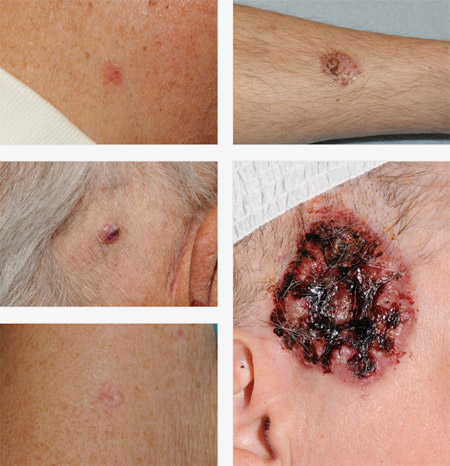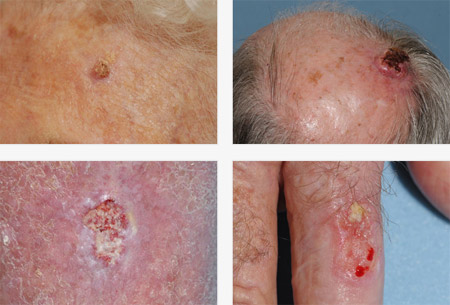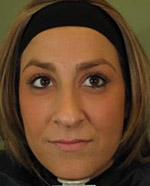Symptoms & Diagnosis
If you are at risk of skin cancer it is important to come in annually or every six months for a full body skin exam.
Basal Cell Carcinoma (BCC)
Basal cell carcinoma is the most common type of skin cancer. Most BCC’s do not spread beyond the skin to other parts of the body. However going untreated the BCC can cause extensive damage to the local area including the skin, muscle, bone, and body structures nearby such as the eyes and lips
What To Look For
It can look like a small, pearly, translucent bump, an area of thickened scar tissue, or a red, scaly patch. They can often bleed, crust over, but not completely heal.

Squamous Cell Carcinoma (SCC)
Squamous cell carcinoma is the second most common type of skin cancer. This type of skin cancer has the potential to be more dangerous because of it can sometimes metastasize (break away) from the local skin area and spread to local lymph nodes. It also has the potential to spread to other areas of the body away from the local skin area. SCC also has a greater recurrence rate than BCC, even after surgery.
What To Look For
The early stages of squamous cell skin cancer can appear as a red, scaly, flat patch, or a scaly bump. Sometimes, rapidly growing SCCs can be quite tender to the touch. The majority of these, however, are pain-free.

Malignant Melanoma (MM)
The third most common type of skin cancer is malignant melanoma. Melanoma is one of the most dangerous forms of skin cancer because it can spread to organs and bone. Therefore it is usually considered the most life threatening skin cancer.
What to look for:
- A dark spot that appears suddenly next to or within an existing mole.
- An existing mole changes in the color or size.
- An existing mole begins crusting, oozing, or bleeding.
- Pigment spreads from the border of a mole into surrounding skin.
- A mole becomes tender, painful, or itchy.














